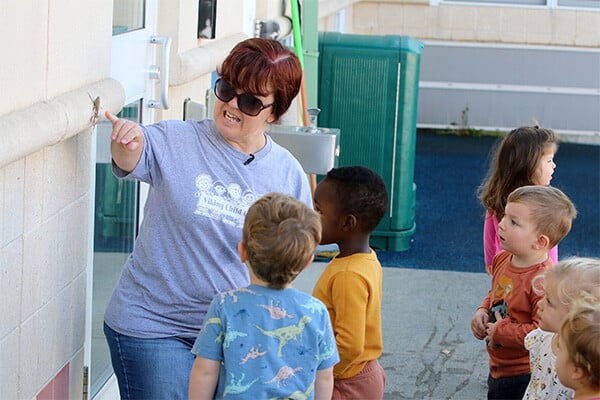We often hear—and we tell others—to be “good digital citizens.” Because the digital world plays an important role in education, in job searches, and in the workplace, developing and practicing good digital citizenship skills matters.
By definition, G-W resources state that digital citizenship is “the ability to responsibly access and demonstrate appropriate behavior when using technology to communicate.”
What does that really mean in our daily lives? Let’s take a closer look at a few specific examples of digital citizenship that students—and educators—can relate to as they begin to learn, practice, and apply new skills in the digital age.
1. Have Good Netiquette
 Whether you are interacting with others via text, social media, e-mail, or other digital platforms, it’s important to exhibit appropriate online behavior. That starts with using correct capitalization, spelling, and grammar. In addition, think before you write, send, or post. Be careful with sarcasm and make sure your words will not be misconstrued. A good rule of thumb is to treat others as you would like them to treat you, whether you are in person or online. Remember, poor netiquette—slandering a person or posting false statements that damage a person’s reputation (libel)—can have legal consequences.
Whether you are interacting with others via text, social media, e-mail, or other digital platforms, it’s important to exhibit appropriate online behavior. That starts with using correct capitalization, spelling, and grammar. In addition, think before you write, send, or post. Be careful with sarcasm and make sure your words will not be misconstrued. A good rule of thumb is to treat others as you would like them to treat you, whether you are in person or online. Remember, poor netiquette—slandering a person or posting false statements that damage a person’s reputation (libel)—can have legal consequences.
2. Use Technology in a Positive Way
What kind of online presence do you have? Enter your name in a search engine to find out. Think of ways to create a positive online presence, such as creating well-written blogs or an online professional portfolio. A negative online presence includes inappropriate photos, behavior, or remarks. Don’t use technology for negative purposes, such as cyberbullying, or illegal purposes. Instead, use technology to build your personal brand and create a good reputation that sets you up for success in your career.
3. Think about Your Digital Footprint
![]() Your digital footprint is a record of all your online activities, even those you’ve deleted. Internet posts never really go away. Colleges and employers may review your social media platforms during the interviewing process and beyond. Take a look at your social media accounts. Make sure that you are leaving a positive first impression and that they are representative of how you want others to view you. As you move forward, think about how your social media posts and comments are a reflection of you, both personally and professionally.
Your digital footprint is a record of all your online activities, even those you’ve deleted. Internet posts never really go away. Colleges and employers may review your social media platforms during the interviewing process and beyond. Take a look at your social media accounts. Make sure that you are leaving a positive first impression and that they are representative of how you want others to view you. As you move forward, think about how your social media posts and comments are a reflection of you, both personally and professionally.
4. Use the Internet Responsibly on the Job—and at School
Workers should use their employer-provided computers and Internet access for professional purposes. Most companies have an “acceptable use policy” to explain how you can—and can’t—use company equipment for personal reasons. Schools may have similar rules and policies in place. Companies may monitor Internet sites that you visit, the amount of data that you download, and how much time you spend online. Do not expect personal privacy on company-owned computers or servers.
Digital citizenship extends beyond these four areas and includes other important topics such as intellectual property and digital security. With so many different angles to consider, having a trusted resource to explore digital citizenship and the evolving digital world is key.
G-W is ready to help you provide a solid foundation of acceptable and ethical digital behavior. From middle school (Discovering Careers) and high school (School to Career) to college and beyond (Connect to Your Career), learners can use G-W’s hands-on resources and activities to increase their knowledge about digital citizenship and develop the skills to effectively manage their online behavior and presence. Free Previews are available.
Employers expect employees to act professionally online and display digital responsibility on the job. You might want to talk about your awareness of digital citizenship in interviews or on the job—employers will be impressed! Give yourself an edge and start practicing these digital citizenship skills today.
Source for this blog: G-W’s Career Education resources





